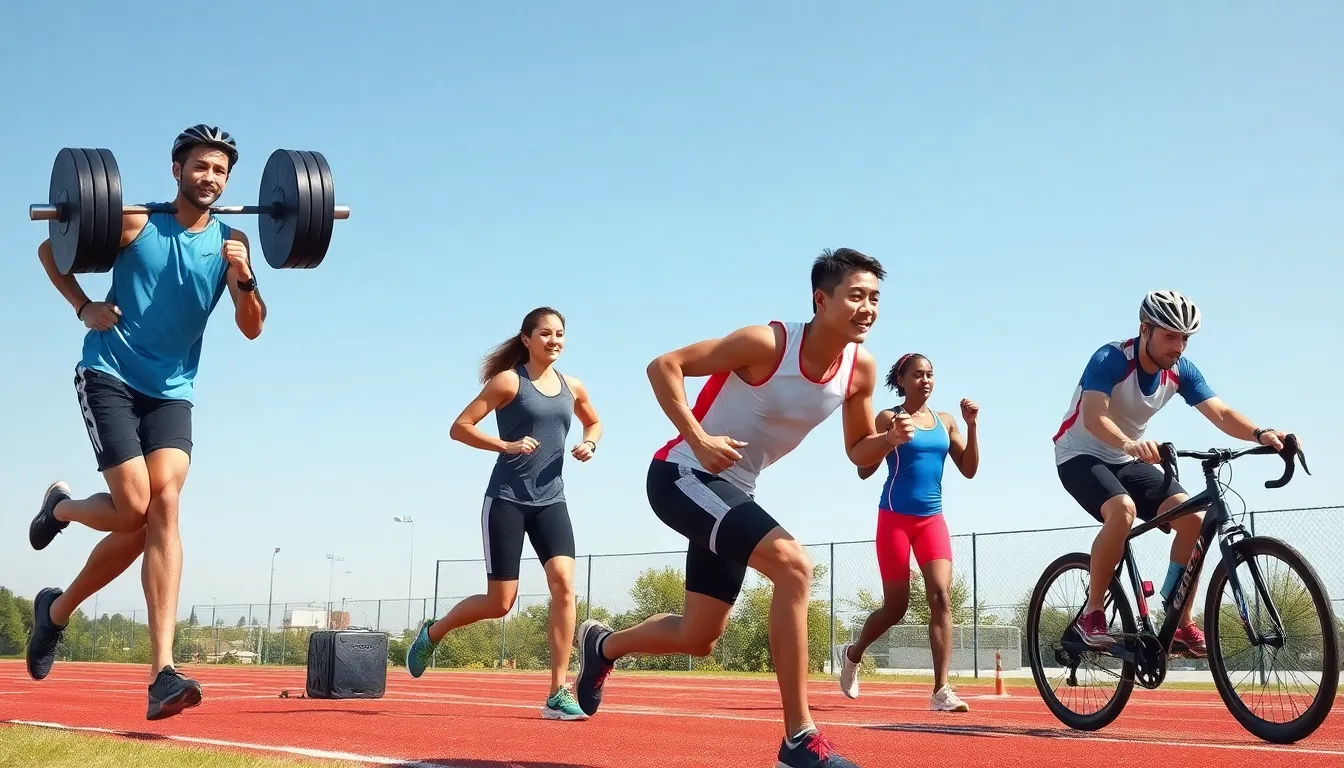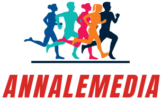In a world where couch potatoes reign supreme and gym memberships are often used as glorified coat racks, exercise and sports science emerges as the superhero we didn’t know we needed. It’s not just about sweating buckets or flexing muscles; it’s a fascinating blend of biology, psychology, and physics that reveals how our bodies perform, adapt, and sometimes, let’s be honest, throw tantrums.
Exercise And Sports Science
Exercise and sports science encompasses multiple disciplines, combining aspects of biology, psychology, and physics. This field studies how physical activity impacts the human body and how individuals can optimize performance and health. Physiology plays a central role, examining how muscles, bones, and organs respond to exercise. Understanding energy systems is critical as well; these systems dictate how the body fuels activity, influencing endurance and strength.
Research in exercise and sports science often highlights the psychological components of performance. Motivation, mental resilience, and stress management all significantly affect athletes’ outcomes. Sports psychology focuses on techniques that can enhance athletes’ concentration and improve competitive performance.
Biomechanics offers insights into movement efficiency, analyzing techniques to enhance performance and reduce injury risk. By understanding these mechanical principles, coaches can tailor training regimens that maximize effectiveness while minimizing negative effects.
Nutrition, another vital component, illustrates the relationship between diet and physical performance. Specific nutrient timing and composition can greatly influence recovery, energy levels, and overall well-being.
Lastly, this field informs public health initiatives, encouraging individuals to engage in regular physical activity. The evidence-based approach helps promote safe exercise practices, benefits of an active lifestyle, and prevention of chronic diseases. Exercise and sports science serves as a crucial element for both athletes and the general population, supporting overall health and enhancing performance across various levels.
Key Concepts in Exercise Physiology


Exercise physiology encompasses critical concepts vital for understanding how the body responds to physical activity. Two fundamental areas include energy systems and muscular adaptations.
Energy Systems in the Body
Energy systems provide the fuel necessary for movements. The body utilizes three primary systems: ATP-PC, anaerobic glycolysis, and aerobic metabolism. ATP-PC delivers immediate energy for short bursts of activity lasting around 10 seconds. Anaerobic glycolysis kicks in for high-intensity efforts sustained up to two minutes, relying on glucose for quick energy. Aerobic metabolism excels during prolonged activities, generating energy through fat and carbohydrate oxidation. Each system operates depending on the intensity and duration of exercise, influencing overall performance and recovery.
Muscular Adaptations to Training
Muscular adaptations play a pivotal role in enhancing physical performance. Resistance training stimulates muscle fibers, leading to hypertrophy, which increases muscle size and strength. Endurance training improves the efficiency of muscle fibers and increases capillary density, promoting better oxygen delivery. Regular training leads to neuromuscular adaptations as well, enhancing coordination and motor unit recruitment. These adaptations result in improved performance, allowing athletes to execute tasks with greater ease and efficiency over time.
Importance of Nutrition in Sports
Nutrition plays a critical role in optimizing athletic performance and recovery. Proper dietary choices fuel workouts, improve endurance, and aid muscle repair.
Macronutrients and Performance
Carbohydrates serve as the primary source of energy during exercise. High-intensity activities often rely on glycogen stores for optimal performance. Proteins play a significant role in muscle recovery and growth, aiding in the repair of muscle fibers post-exercise. Healthy fats support longer-duration activities by providing a vital energy source. Athletes should balance these macronutrients to enhance training outcomes. Utilizing specific carbohydrate and protein ratios can maximize energy availability and support recovery, leading to improved performance.
Hydration Strategies for Athletes
Maintaining adequate fluid balance is essential for athletes. Dehydration, even at low levels, can negatively impact performance. Regular fluid intake during activities helps sustain endurance and cognitive function. Electrolytes, like sodium and potassium, play key roles in maintaining hydration and muscle function. Athletes can benefit from tailored hydration strategies that include fluid replacement before, during, and after exercise. Monitoring urine color can provide quick insights into hydration status, guiding athletes in their fluid intake decisions.
Psychological Aspects of Sports Performance
Psychological factors critically influence sports performance. Understanding these elements can enhance an athlete’s competitive edge.
Mental Toughness and Resilience
Mental toughness refers to the ability to stay focused and determined under pressure. Athletes with strong mental resilience quickly recover from setbacks, maintaining a positive mindset. They exhibit confidence and persistence, essential traits for overcoming challenges. Techniques such as visualization and positive self-talk contribute to building mental fortitude, enabling athletes to perform at their best during crucial moments. Regular practice of mindfulness and meditation can also enhance emotional control and focus, fostering a stronger mental state that supports consistent performance.
The Role of Motivation in Training
Motivation serves as a driving force behind athletes’ dedication to training. Intrinsic motivation, stemming from personal satisfaction and passion for the sport, fuels continuous improvement. Extrinsic motivation, including rewards and recognition, can also encourage athletes to push their limits. Goal-setting plays a crucial role in maintaining motivation, providing specific objectives to aim for during training sessions. Regularly assessing progress increases accountability and commitment to training routines, fostering long-term success. Understanding what inspires each athlete individually is crucial for tailoring approaches that maximize engagement and performance.
Emerging Trends in Exercise and Sports Science
Wearable technology is gaining prominence in exercise and sports science, providing real-time data on performance metrics. Devices such as heart rate monitors and GPS trackers help athletes fine-tune their training regimens. Artificial intelligence is also transforming how coaches analyze performance, utilizing data to create tailored training plans.
Recovery strategies continue to evolve, with an increasing focus on active recovery techniques. Methods like foam rolling and dynamic stretching are touted for their effectiveness in enhancing recovery times. Additionally, high-intensity interval training (HIIT) remains popular, combining short bursts of intense exercise with brief rest periods to maximize efficiency.
Nutrition science is experiencing advancements, with personalized nutrition plans based on genetic and gut microbiome analysis. These developments are shaping optimized dietary strategies, ensuring athletes receive the specific nutrients necessary for peak performance. Plant-based diets are gaining traction, with more athletes embracing this approach for its potential health benefits.
Mental health awareness is on the rise, influencing training methodologies. Techniques that promote mental wellness, such as mindfulness and stress reduction, are being integrated into athletic training programs. Coaches prioritize athletes’ emotional well-being, recognizing its impact on performance.
Community engagement in exercise science initiatives is expanding, promoting physical activity as a public health priority. Programs that encourage group participation foster motivation and accountability among participants. Technologies that gamify fitness experiences, like interactive apps and online challenges, are also stimulating broader interest in physical activity.
Research is increasingly recognizing the value of sleep and recovery in overall performance. Sleep optimization strategies are being incorporated, as quality rest is essential for muscle repair and mental focus. As these trends emerge, the intersection of technology, recovery, nutrition, and mental health continues to shape the future of exercise and sports science.
Conclusion
Exercise and sports science plays an essential role in understanding human performance and health. It integrates various disciplines to optimize physical activity and improve outcomes for both athletes and the general population. As awareness of this field grows, so does the importance of tailored training, nutrition, and mental wellness strategies.
Emerging trends like wearable technology and personalized nutrition are revolutionizing how individuals approach fitness and recovery. The focus on mental health and community engagement is fostering a more inclusive environment for physical activity. By embracing these advancements, society can enhance its approach to exercise and promote healthier lifestyles for everyone.

